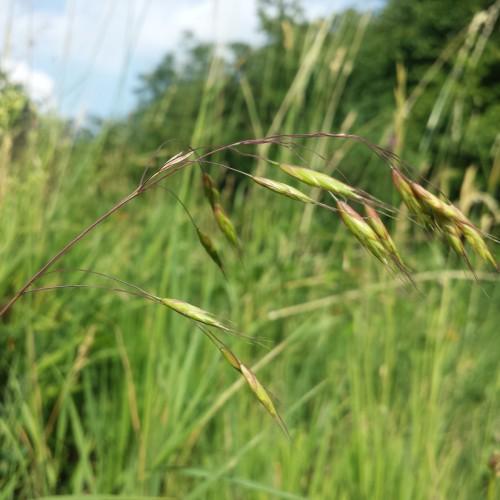
California Brome
Bromus sitchensis var. carinatus
Watering:
Frequent
Hardiness Zone:
Sun:
full sun,part shade
Leaf:
Yes
Growth Rate:
Low
Salt Tolerant:
Yes
Thorny:
Yes
Invasive:
Yes
Care Level:
Medium
watering
Sitka Brome should be watered once a week in the summer and every 2 weeks in the winter. The amount of water that should be used for each watering should be based on the size and age of the plant. For small plants, use 1 to 2 teaspoons of water for each watering, and for large plants use 2 to 3 tablespoons of water for each watering. Take care not to over-water, as this can have a detrimental effect on the health of the plant. It is important to water at the base of the plants rather than from above to avoid wetting and thus promoting fungal infections.
sunlight
Sitka Brome thrives with close to full sun exposure for around 6 to 8 hours or more each day. This species of plant prefers direct sunlight during the morning hours, then some shade during the hottest periods of the afternoon. During the spring and summer months, Sitka Brome should receive the full 6 to 8-hour daily dose of direct sunlight; throughout the winter months, reduced lighting is ideal and will allow the plant to rest and conserve nutrients.
pruning
Sitka Brome should be pruned annually, prior to new growth emerging in early spring. Start pruning at the base of the grass and work your way outward, cutting back no more than 1-third of the grass's existing growth at any single pruning. This grass should be kept at a height of 12-18 inches to maintain a healthy and attractive appearance. Prune off the flower stalks as soon as they emerge, as they can become weedy in certain climates. Make sure to rake up any clippings left from pruning and dispose of them properly.
